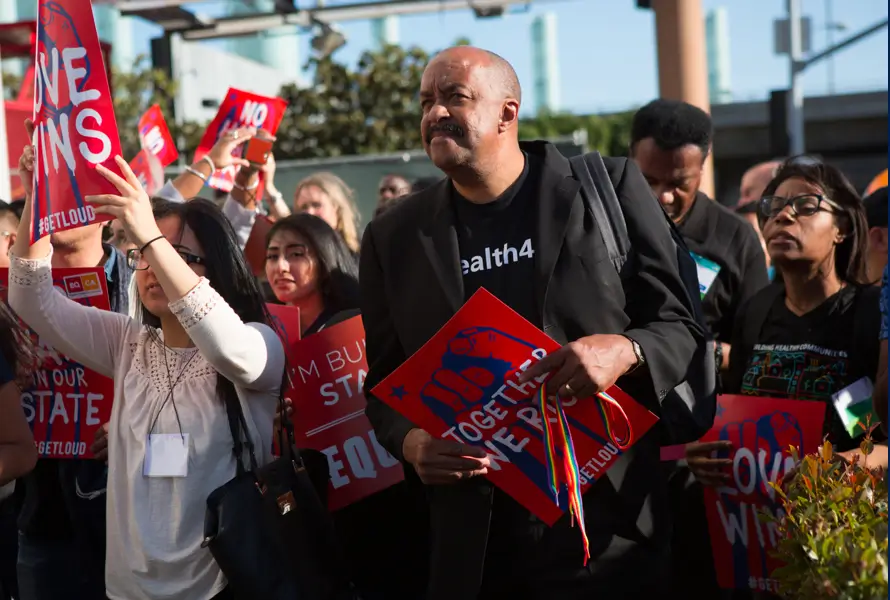
Overview of Building Healthy Communities (BHC)
Building Healthy Communities (BHC) is a 10-year, $1 billion comprehensive community change initiative launched by The California Endowment (TCE) in 2010 to advance statewide policy, change the narrative, and transform 14 of California’s communities devastated by health inequities into places where all people and neighborhoods thrive.
This includes:
- Boyle Heights
- Central Santa Ana
- Central / Southeast / Southwest Fresno
- City Heights
- Del Norte and Tribal Lands
- Eastern Coachella Valley
- East Oakland
- East Salinas (Alisal)
- Long Beach
- Richmond
- South Sacramento
- South Los Angeles
- South Kern
- Southwest Merced / East Merced County

How to use & interpret this report
Purpose:
Develop a summary that:
- Synthesizes 10 years of BHC efforts focused on high-level storylines for each of the four North Star Goals.
- Lifts up key achievements and challenges of BHC partners, and documents the impact they have had on local communities and the state.
Guiding principles & aims
- Provide a brief, visual, and highly synthesized narrative that attempts to capture the complexity, breadth, and depth of the foundation’s work.
- Present select data points, measures, case examples, new stories, and anecdotes to support high-level storylines for each of the North Star Goals.
- Extract insights presenting storylines in a digestible and easy-to-understand way, using accessible language in a “landscape format” to be read as a report or “info pack”, and not as traditional PowerPoint presentation.
- Embody a spirit of humility by giving primary credit to BHC partners who led and implemented the majority of the most challenging, on-the-ground work, as well as co-funders of these efforts.
Caveats & limitations
-
This project represents only a slice of the breadth, depth, and complexity of the intiative.
- This project captures how BHC may have contributed to impact; this project does not and cannot attribute, prove, and/or quantify impact of BHC statewide and on its communities.
- TCE conceived of the BHC approach and provided funding to support grantee partners in some of their activities, engaged other funders to support the initiative, and encouraged collaboration and action among local stakeholders using the BHC brand, though not necessarily with TCE funds, to advance health-promoting policies in the BHC places. Participating stakeholders used non-TCE funds for lobbying and any other activities that could not be conducted with TCE funds.
Executive Summary
The Ten-Year Building Healthy Communities (BHC) Digital Retrospective project marks the final year of The California Endowment’s (TCE) ambitious 10-Year, $1B effort to build power and organizing capacity locally, advance statewide policy, change the narrative, and transform 14 of California’s communities devastated by health inequities into place where all people and neighborhoods thrive.
Over the course of the past decade, BHC has had a tremendous impact on its communities, regions, and the state, contributing to 1,200+ policy changes and counting through its vibrant and strong power-building infrastructure comprised of local, regional, and statewide community-based organizations and grassroots coalitions.
The initiative developed innovative approaches to address the social determinants of health and promote racial & health equity and, along the way, reimagined the role of philanthropy in public health through the creation of a new model – a proof of concept – for effectively supporting communities.
In doing this, TCE learned that building voice and power via long-term investment is the best and only way to advance health and racial equity in a sustainable fashion.
At the onset, many of BHC’s communities and leaders were highly critical of TCE’s initial prescribed approach and, over-time, the Foundation listened and responded with flexibility. TCE is grateful for their candor, as it strengthened and clarified the aims of BHC, which ultimately led to its success.
Due to this feedback, TCE went against the grain of the broader philanthropic field – debunking long-held grantmaking assumptions and producing a new set of innovative best practices.
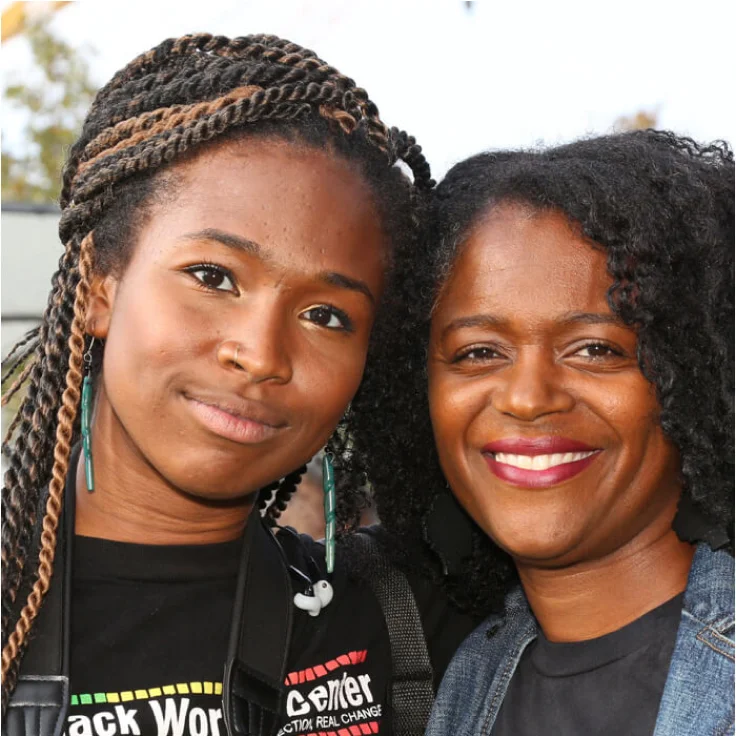
This philanthropic approach provided the necessary support and platform for BHC partners and grantees to lead transformative change and achieve multiple impacts, of which only a select sample is represented below:
 Building Voice & Power
Building Voice & Power
BHC partners cultivated a vibrant and dynamic adult and youth organizing ecosystem that yielded over 1k+ local and state policy wins. The infrastructure built by BHC will help sustain these wins, while youth voice will continue to play a critical role in leading change for generations to come. BHC partners played a critical role in activating the state’s electorate through Integrated Voter Engagement efforts (IVE), as well as transforming public systems, including bringing a racial equity lens to local governance. The initiative also influenced the broader philanthropic field, raising awareness around funding gaps in the Central Valley and boys and men of color, leveraging $1.4B in public and private funds in BHC-related issues, and responding to the needs of partners and the shifting federal context.
 Health Happens with Prevention
Health Happens with Prevention
BHC and funding partners played a critical role in supporting the implementation of the Affordable Care Act and ensuring communities enrolled in newly expanded Medi-Cal programs. This effort, supported by the state/local government and other funders, enabled California to become a national model of success. BHC partners also contributed to policies that expanded healthcare access to both children and/or new policies. BHC also seeded programs in Health Homes and Health Workforce, which resulted in millions of federal and state dollars of investment and will ensure better quality of care for Californians in need. Finally, BHC contributed to building prevention and healthcare capacity and infrastructure through CACHI in select communities to promote health equity.
 Health Happens in School
Health Happens in School
BHC partners advocated for more equitable funding of California’s schools through the Local Control Funding Formula (LCFF) policy, which resulted in much-needed increased per-pupil spending and lower teacher-to-student ratios. Moreover, partners played an important role in implementing the policy to ensure that new dollars directly benefited students and families most-in-need. BHC led a powerful campaign to improve school cimate, change the public narrative and raise awareness surrounding the “school-to-prison pipeline” and end harsh and overly punitive school discipline policies. The work yielded a 50% decrease in suspensions statewide, contributing to more in-class time for teaching and learning. This school climate effort may have also contributed to an improvement in school graduation rates.
 Health Happens in Neighborhoods
Health Happens in Neighborhoods
BHC partners contributed to ending youth incarceration across the state with youth arrests declining by more than 75%. Coalitions also helped reduce mass incarceration through narrative change, the advocacy of critical policies such as Prop. 47, and ensuring strong implementation, which resulted in a marked decrease in the state’s adult prison population. Given shifts at the federal level, BHC played a greater role in protecting immigrants and undocumented Californians both at the state- and local-levels. Last, people and community power helped resist displacement and advance equitable community development at the state- and local-levels. BHC sites offer ground-breaking case examples of how community organizing can promote environmental justice and yield improvements in water access and quality, and equitable development of parks and recreation and active transportation infrastructure.
The work of BHC is far from done
Despite this incredible body of work and resulting achievements, BHC communities and the state have not yet achieved health and racial equity. In conjunction, external factors such as the COVID-19 epidemic, the economic downturn and a federal context that seeks to undo and block BHC’s progress impede BHC’s current and future efforts.
There is more work to be done. TCE remains committed to the BHC vision of racial and health equity beyond the sunset of the initiative and will continue advancing these goals with sustained investment and collaborative partnerships.
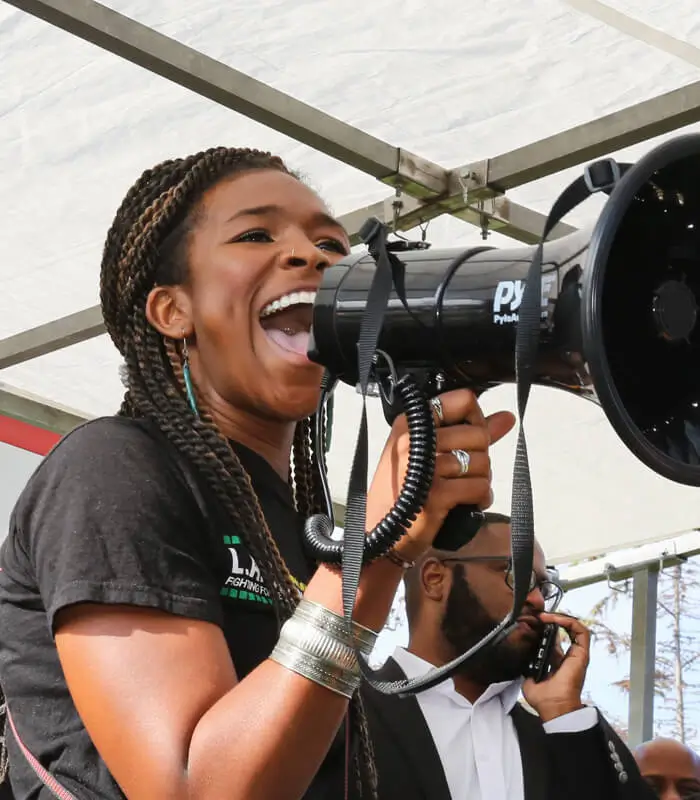
Evolution from Four Big Results to North Star Goals & Indicators (NSGIs)
A series of evolving measurement frameworks were developed to guide BHC, where each framework built upon the preceding one.
In November 2016, TCE’s Board approved the North Star Goals and Indicators (NSGI) as the leading framework to measure the progress of Building Healthy Communities (BHC).
The NSGIs incorporated power-building as the core and central focus of BHC.
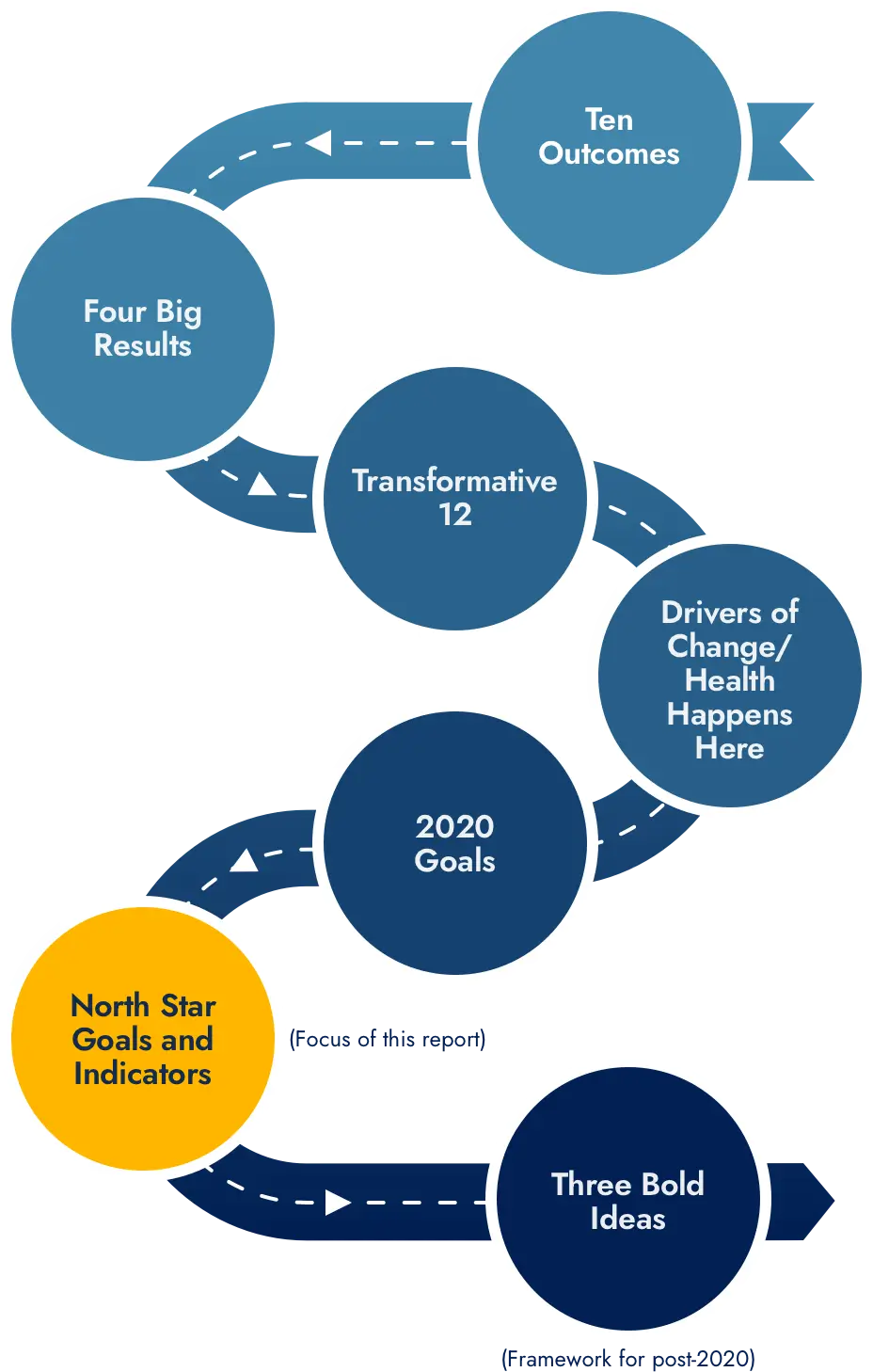
North Star Goals & Indicators
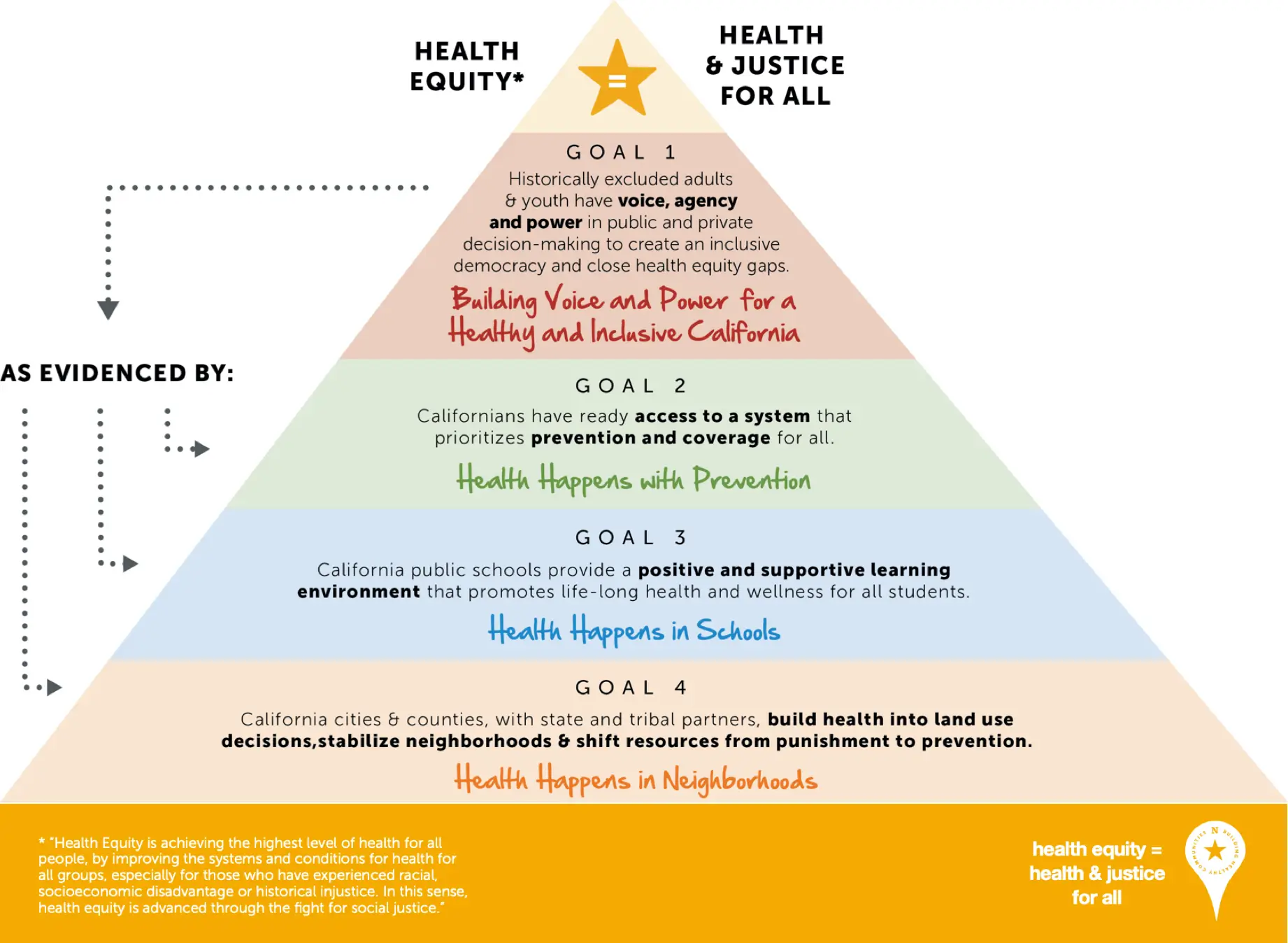
GOAL 1
Building Voice and Power for a Healthy and Inclusive California
GOAL 2
Health Happens with Prevention
GOAL 3
Health Happens with Schools
GOAL 4
Health Happens with Neighborhoods
Key events over past 10 years
highlight that BHC has operated in a highly complex & dynamic environment and taken action to be both proactive & responsive to this shifting context
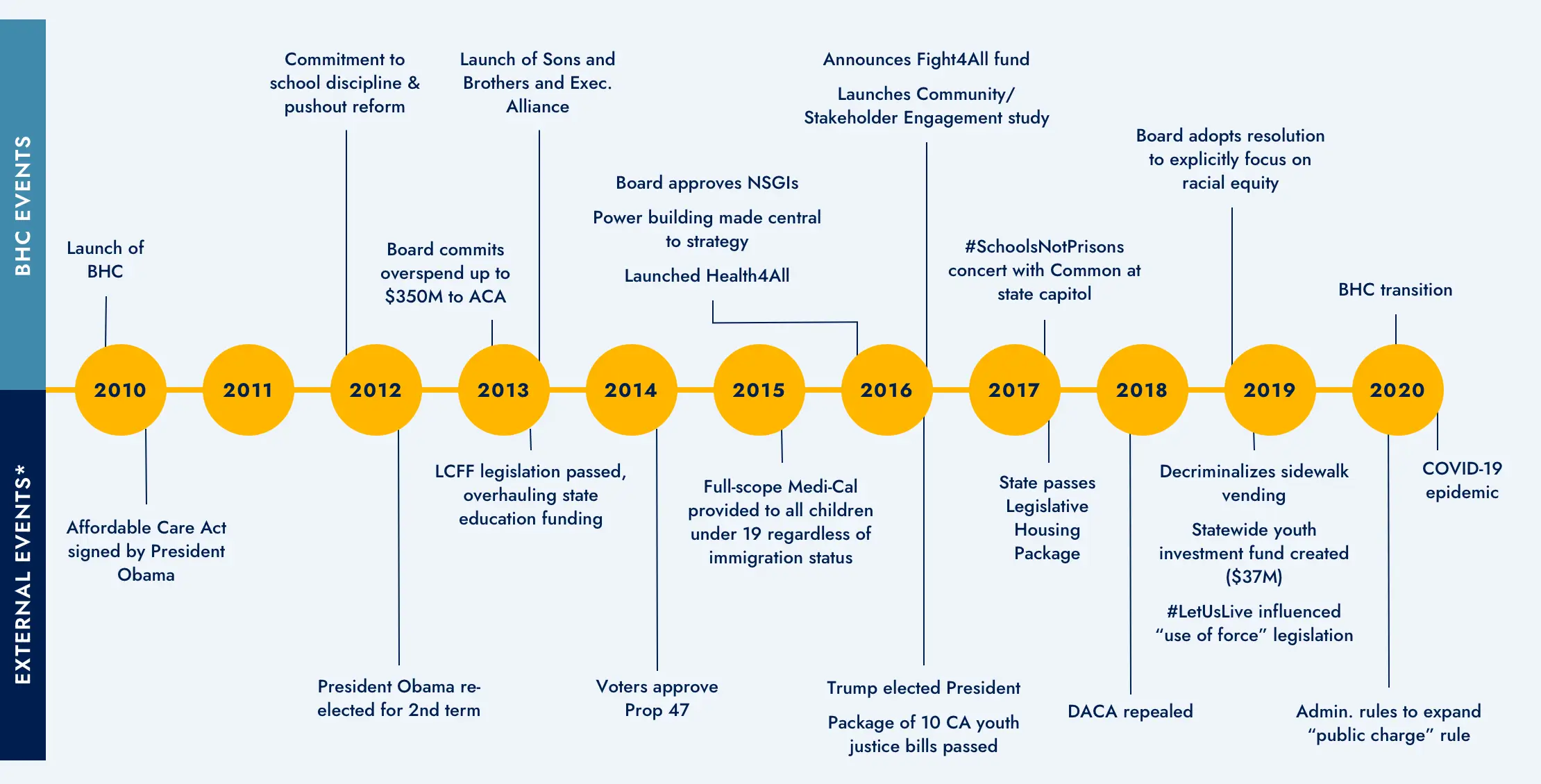
*This only represents a fraction of key statewide/federal events; local events and wins are highlighted throughout the remainder of this report.
Board made explicit commitment to racial equity in August 2018
Whereas, pursuant to its mission and core values, The California Endowment has dedicated its resources to advancing the health of underserved communities and promoting diversity, equity, and inclusion in our grant making and organizational work; and
whereas, the legacy of racial injustice and racial inequality continues to impede progress and exacerbate divisiveness across the nation, resulting in poor health outcomes for people across our nation and California;
whereas, that the Board of Directors, commits itself and the organization to engage in a deeper understanding of the interconnectedness of race and health, and to a more assertive and consistent application of a racial equity, racial justice, and racial healing lens to our work in the decade to come. We aspire to serve as an organizational model of such action for the field of philanthropy and the nonprofit sector and we commit to racial justice, health, and equity for all people.
Resolved, that The California Endowment Board of Directors shall promote the use of adherence of these tools in conducting the business of The California Endowment.
Note: Passed and adopted on August 15, 2018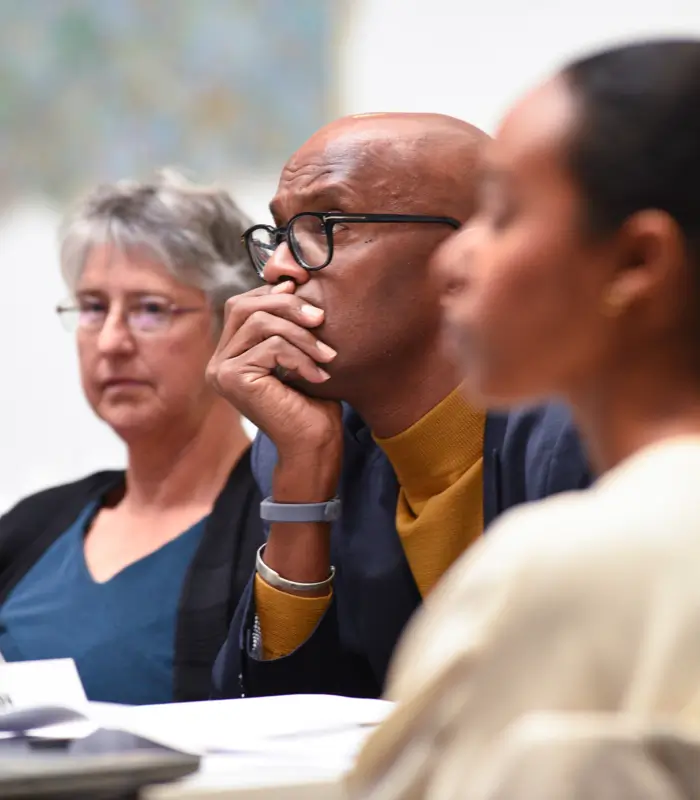
BHC embodied an innovative philanthropic approach by addressing the social determinants of health via community change
Building on initiatives and foundations’ lessons learned prior to BHC, TCE focused on addressing upstream approaches – the “social determinants of health” and prevention.
Along the course of BHC, TCE learned that building voice and power (e.g. “people power”) is one of the most critical ways to operationalize and actively address the social determinants of health and create lasting change.
People power became both the means and the end of BHC: Policy wins and individual campaign achievements were impactful, but insufficient to sustain the work.
Although many of the issues have been priorities for local communities for decades, BHC investment in the organizing infrastructure helped spur momentum, hastened change, and offered legitimate voice to their causes.
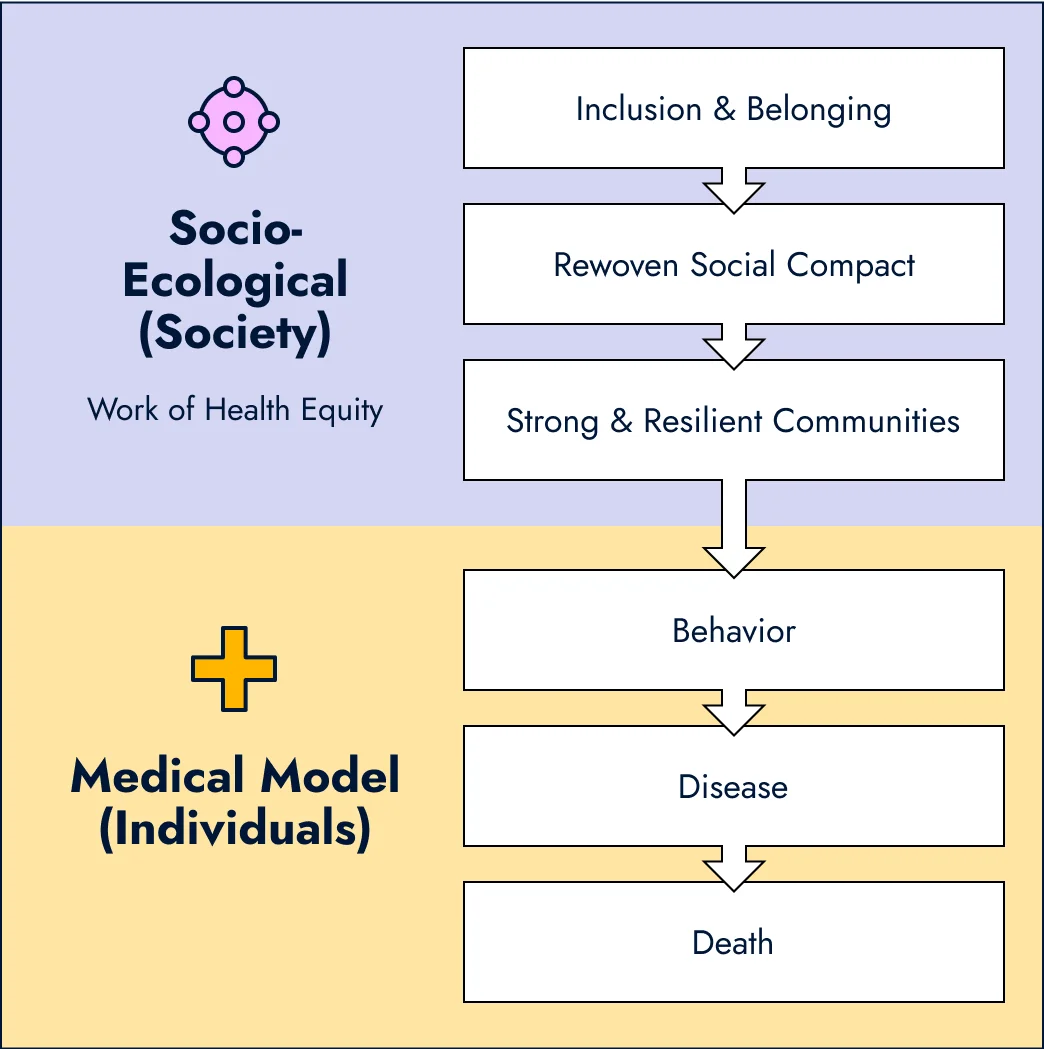
BHC grew and evolved
moving from a foundation intiative to supporting the building of a movement…
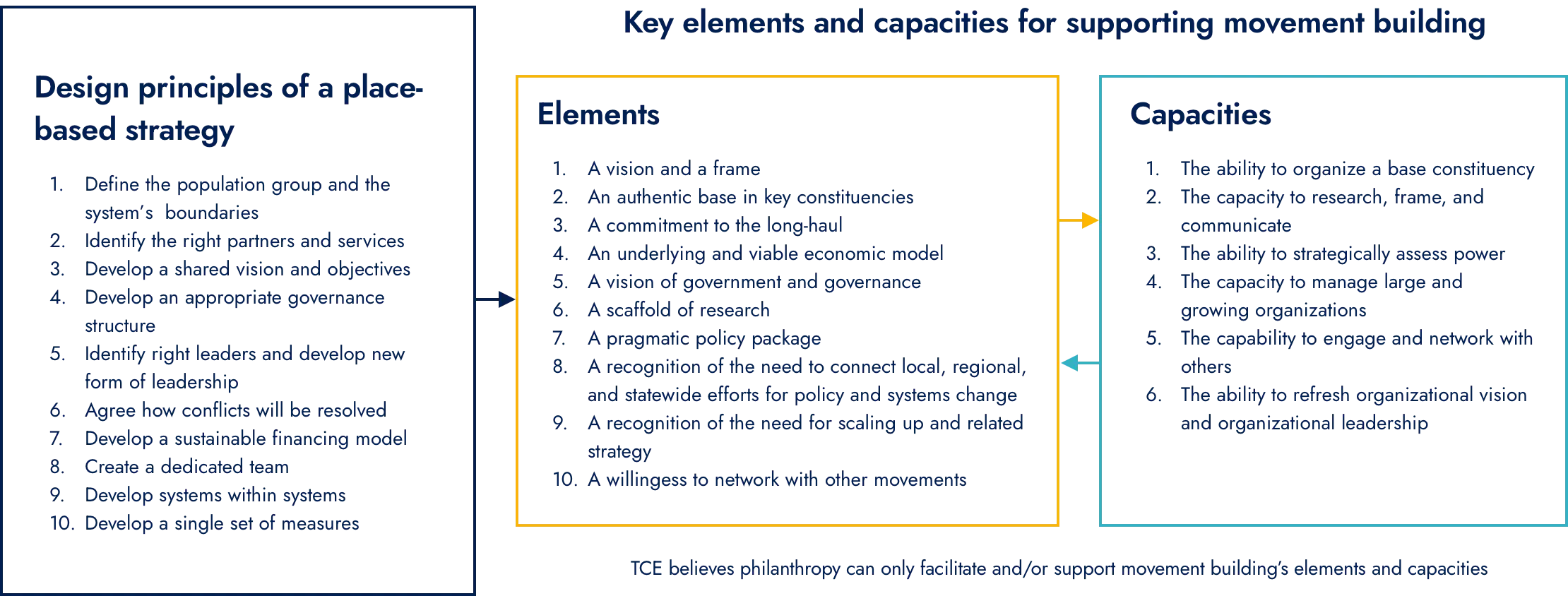 Source: “Ten design principles for place-based systems of care.” The Kings Fund: “Making Change: How Social Movements Work and How to Support them.” USC PERE, 2009.
Source: “Ten design principles for place-based systems of care.” The Kings Fund: “Making Change: How Social Movements Work and How to Support them.” USC PERE, 2009.
…while also debunking key assumptions surrounding historical philanthropic approaches
| FROM A PHILANTHROPIC APPROACH THAT: | TO ONE THAT: |
|---|---|
| Invests in a traditional, place-based strategy with a focus on geographical boundaries and a saturation of social services in order to advance quick, population-based outcomes for a small, defined population. | Invests in a movement-building strategy with a focus on building voice and power of grassroots organizations and leaders who serve as architects and drivers of sustainable change for marginalized communities statewide. |
| Utilizes top-down methods that solely engage communities in order to garner their input and feedback on a prescribed grantmaking strategy. | Utilizes community-leadership methods to support a power-building infrastructure that leads and executes on a grassroots-driven agenda and strategy. |
| Invests in short-term, strategic opportunities to seed an issue area, hopes for impact to bloom, and leaves within 1-4 years in the spirit of “catalyzing” change and targeting “low-hanging fruit.” | Invests over the long-term with patient capital (10+ years) to develop and sustain a power-building ecosystem with capabilities to drive big policy change, transform the electorate, implement policy, and hold systems accountable so that the impact will last a generation and/or longer. |
| Avoids collaboration with and investment in local and state government, and works in parallel with their efforts. | Focuses on collaboration and also opportunistically invests directly in government and its effort in order to leverage dollars and provide strategic influence to ensure sustainability. |
| Does not invest directly narrative change or “leaves it for others.” | Invests directly in narrative change with the understanding of how it undergirds broader policy and societal transformation. |
| Focuses solely on building capacity where there is already existing capacity (e.g. “creaming the top”) to mitigate risk. | Focuses on building capacity long-term, even where there is little or none available in service of building a broader movement. |
| Hires leadership and staff solely on the basis of professional experience in philanthropy, business, and nonprofit leadership. | Hires leadership and staff with strong community leadership, grassroots organizing, and “lived” experience. |
| Watches and waits, is cautious, especially in regard to “hot button” issues surrounding race and racial equity. | Takes risks, especially on issues surrounding race and racial equity that may be perceived as “alienating” the mainstream. |
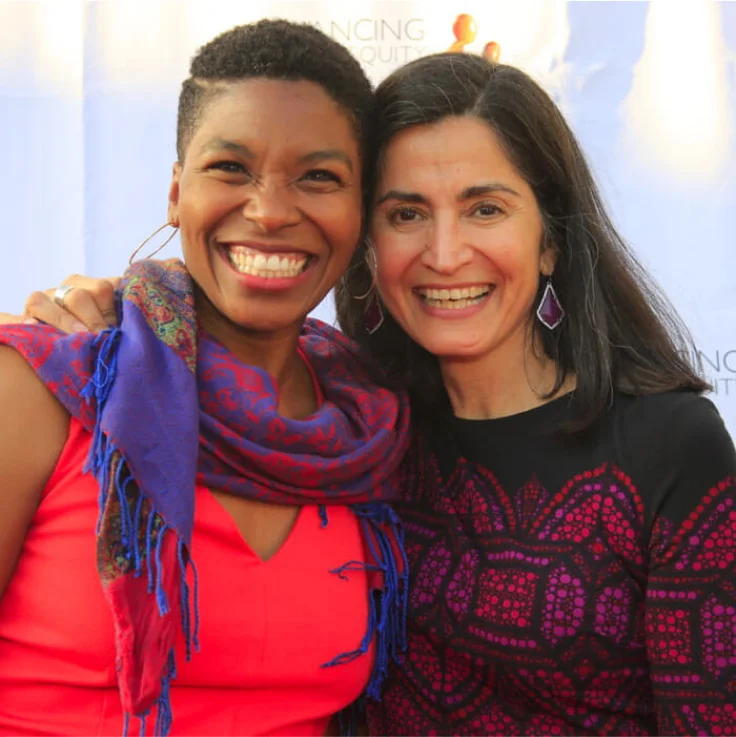
Key insights and learnings from BHC’s powerbuilding work
BHC evolved across this key areas…Strategy development and implementation
- Power-building was an original component of BHC’s Theory of Change, manifesting itself initially in most BHC sites as civic engagement.
- As communities strengthened organizing and base-building, site leaders and Program Managers advocated for greater emphasis on power, and in conjunction with equity partner organizations, supported a further shift to a power-building approach within the Foundation.
- 83% of all BHC grants were considered power-related.
- Power-building investments between 2010 and 2019 amounted to over $1.4 billion.
- Over half of these investments were at least partially in support of Organizing and Base-Building (57.6%)
- TCE expanded its knowledge of the efficacy and techniques of power-building through successive investments in ACA, IVE, Boys and Men of Color, and the various Health Happens Here campaigns.
Key drivers and approaches
- Youth organizing was recognized as a strong driver of local power-building efforts. Young people lifted up as local priorities issues with schools and restorative justice that directly affected their lives. Youth organizing provided a pipeline of youth leadership development that was capable of enriching communities for years to come.
- Local power-building often began in BHC as issue-specific. Over time, it was recognized as even more effective when it is intergenerational, intersectional (reaching across different policy domains), and trans-local (bridging interests of multiple communities).
- As TCE’s and partners’ understanding of power-building deepened, the goal of BHC at the local and state levels became to help build and support a sustainable power-building ecosystems focused on racial and health equity. The ecosystems needed to respond flexibly and opportunistically as community priorities developed and policy opportunities emerged.
Role of the foundation
- BHC and TCE add value to the power-building ecosystem in many ways: supporting organizational growth; expanding needed capacities (including communications and digital capacities); supporting leadership organizations to mount campaigns; and providing stability through multi-year funding.
- While TCE’s voice and stature are important leadership elements in calling attention and giving stature and credibility to power-building, the foundation learned the importance of working in partnership and leading with humility.
Goal-setting and measurement
- The North Star Goals and Indicators codified the centrality of power-building, identified people power as an end as well as a means, and set forth measures of success.
Future direction
- In charting the transition to the next decade’s work, TCE will prioritize power-building along with racial equity as the first of Three Big Goals for the future.
- In planning future investments, TCE is considering how best to support the power-building ecosystem, including greater long-term support and ensuring capacity through core support grants and multi-year funding.
